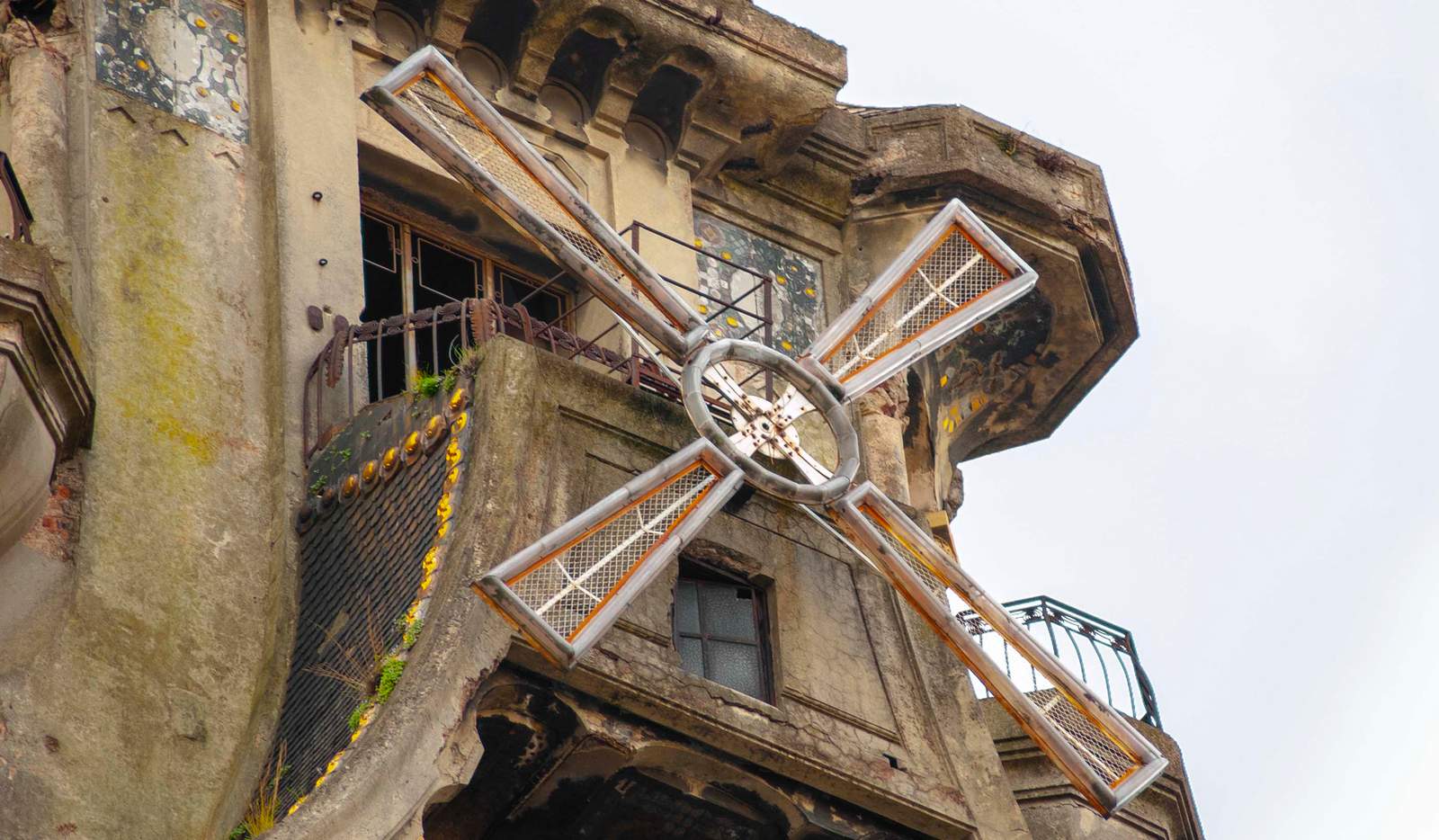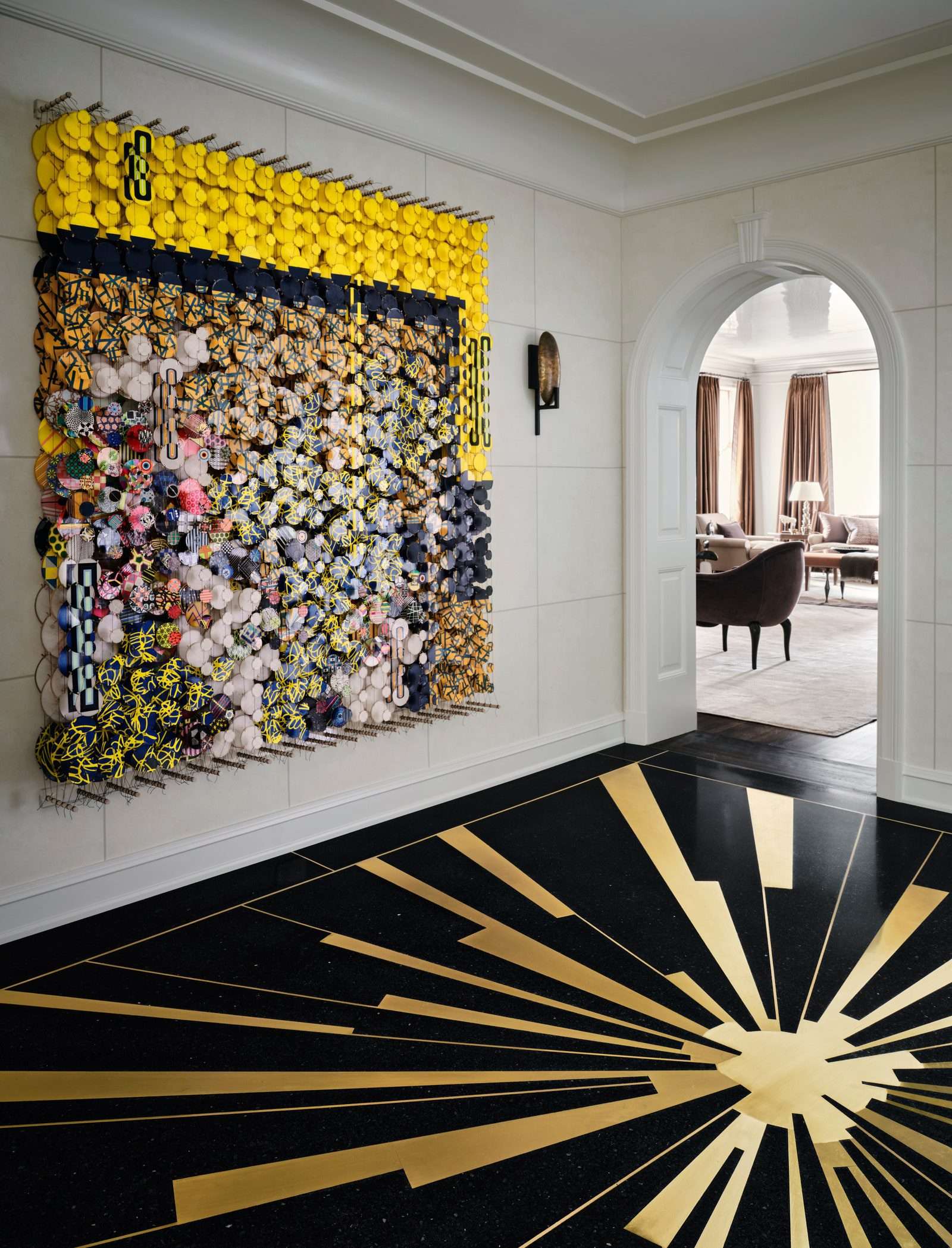After several years of fervent cleaning and replacing ornamentation, restoration work on the facade of Buenos Aires’ art nouveau style Confitería del Molino has completed, and the historic building has reopened to the public.
Confitería del Molino, an eight-story building in the Argentinian capital, dons a 213-foot tall cupola, decorative metal balconies, stained glass windows, and a windmill. It was designed in 1915 by Italian architect Francisco Gianotti as a restaurant for confectioners Constatino Rossi and Cayetano Brenna, also Italian-born. Its name translates to mill confectionary, paying homage to the city’s first flour mill, located in the Plaza del Congreso across the street. When constructed, the 5,000-square-foot cafe was one of the tallest structures in the city; it used only materials imported from Italy.
In its heyday the cafe was a bustling social space, often frequented by politicians, who worked at the neighboring National Congress, which dubbed the building as the “third chamber” of Congress.
In 1930 the building tragically burned down, but was rebuilt one year later. Following the death of Brenna the building had a number of other owners and the restaurant ultimately fell into bankruptcy in 1978. The landmark structure was designated as a National Historical Monument in 1997 and later UNESCO deemed it a Historical Heritage of Art Nouveau and the avant-garde of the Belle Époque era. A transfer of property ownership in 2014 placed the historic building in the hands of the National Congress, an act that initiated restoration work beginning in 2018.

Despite its numerous designations acknowledging its architectural significance, Confitería del Molino languished in a state of serious disrepair; its facade was stained from decades of air pollution, much of its iron and ceramic ornamentation had broken off, and its trademark windmill no longer spun.
The Ministry of Public Space and Urban Hygiene headed the restoration project. A team of restorers began by deep cleaning the stained facade. On the roof, the scalloped shingles were examined and replaced as needed. Painstaking effort went into replacing the building’s decorative elements, including its stained glass windows, tesserae, and a pair of statued winged lions. Historical photos, sourced from local residents, and 3D modeling played integral roles in the restoration project and were used, as needed, to replicate original design elements.
“The Confitería del Molino is one of the many historic buildings that the City has. We have been working preserving its original image and spirit in order to highlight its heritage value so that neighbors can enjoy it again,” the Minister of Public Space and Urban Hygiene, Clara Muzzio, said in a statement published by the government.

An iron balcony on the fifth floor overlooking Callao Street was replaced and rehung. A signature component of the building’s design is the black windmill planted on the rounded front elevation; repair of its sails and blade system put this unique design feature back in operation.
While the focus of the renovation involved enhancing the facade the interiors were not left untouched. Artifacts from its storied past found on-site, including old menus, were recovered, imbuing life back into the lounges, ballrooms, and balconies. A number of structural and technical issues within the building were also addressed in the renovation; this included improving the elevators and electric wiring. Exterior lighting is a major component of the facade; the stained glass windows illuminate from the interiors and are now once again aglow, reinstating the Confitería as a beacon of the city.
The Confitería del Molino reopened to the public on July 8 and visitors can pre-book a tour of the building, which will take them through the ground floor, first floor, basement, and up onto the roof.

